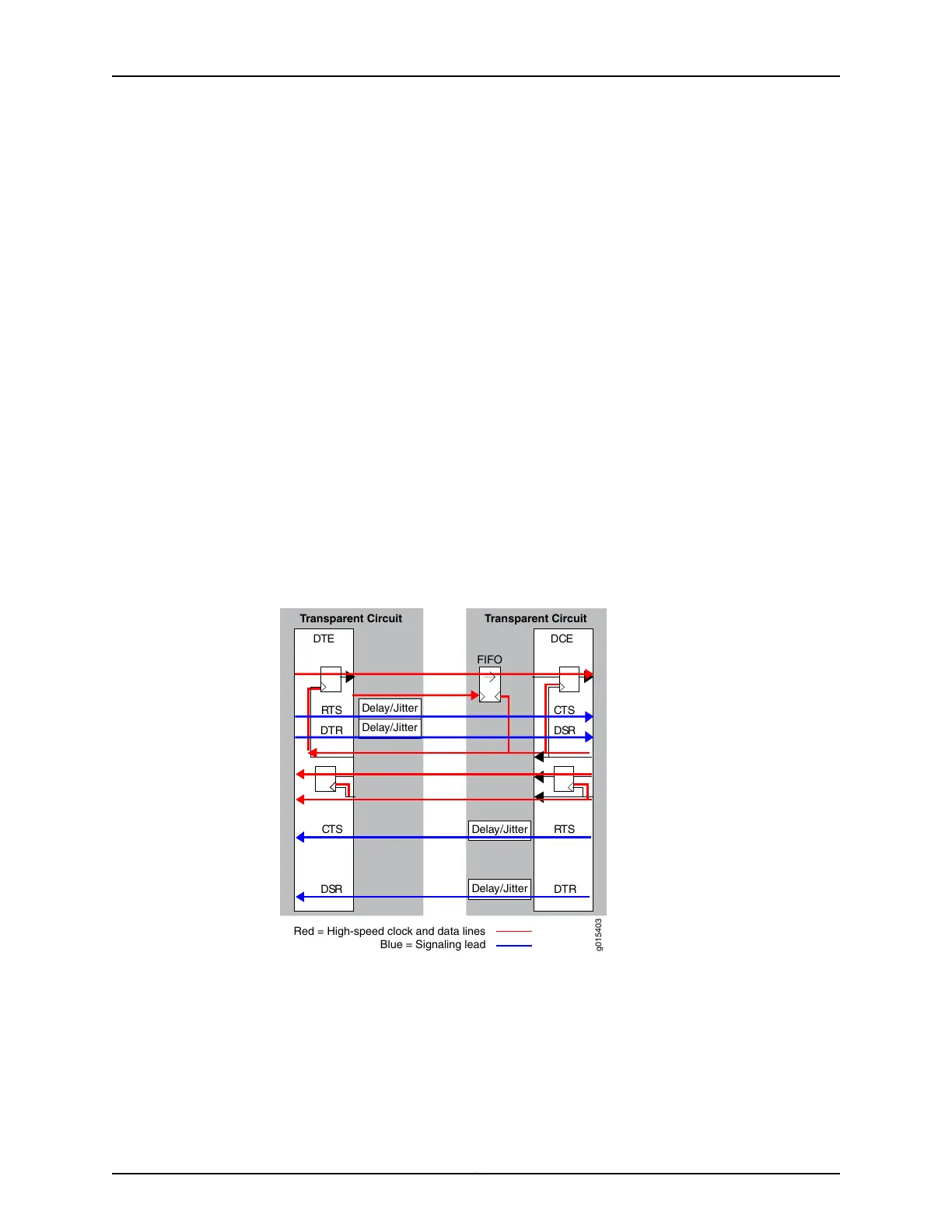Using Send Timing (ST) Clocking for Higher Speed Circuits with Transparent Encoding
When the relationship between the clock and the data signals is critical, you can use ST
clocking with transparent encoding to prevent delay and jitter in CTP2000 series devices,
making it possible to carry higher speed circuits in transparent mode.
Figure 6 on page 16 shows the issue of delay and jitter where a transparent encoded
circuit connects a DCE to a DTE. The circuit is set up as follows:
•
The high-speed clock and data lines (shown in red) are aligned by a FIFO buffer at the
DCE.
•
The signaling leads (shown in blue) are passed end-to-end without going through the
FIFO buffer. The signaling paths that carry non-timing-critical signals are subject to
delay and jitter.
The problem is that when a FIFO buffer is used at one end of the circuit, an additional
clock path from the DCE to the DTE is needed to carry a clock to the DTE so that it can
return a DTE-to-DCE clock that is in phase with the data. This DTE-to-DCE clock is needed
to clock the FIFO input. Normally, one of the signal lead paths carries this transmit clock.
However, when the circuit is running at speeds above 32k, the delay and jitter on these
paths make these signal choices nonoptimal.
Figure 6: High-Speed and Low-Speed Paths with Transparent Encoding
g015403
Red = High-speed clock and data lines
Blue = Signaling lead
DCE
RTS
CTS
DTR
DSR
DTE
DTR
DSR
RTS
CTS
Transparent Circuit
FIFO
Delay/Jitter
Delay/Jitter
Delay/Jitter
Delay/Jitter
Transparent Circuit
To solve the issue of delay and jitter associated with the signaling leads, you can use the
ST interface signal to feed or sink the RTS-to-CTS signal path. By using the ST interface
signal instead of the RTS-to-CTS signal path, delay and jitter are removed from that
signal path. Figure 7 on page 17 shows a transparent-encoded circuit with the additional
ST functionality:
•
At the DCE, the RTS-to-CTS signal path is configured to use ST (as an input from the
DCE) to feed that signal path through the network.
Copyright © 2018, Juniper Networks, Inc.16
Using Bundles to Create Logical Configurations for Physical Interfaces, CTP Release 7.3, CTPView Release 7.3
